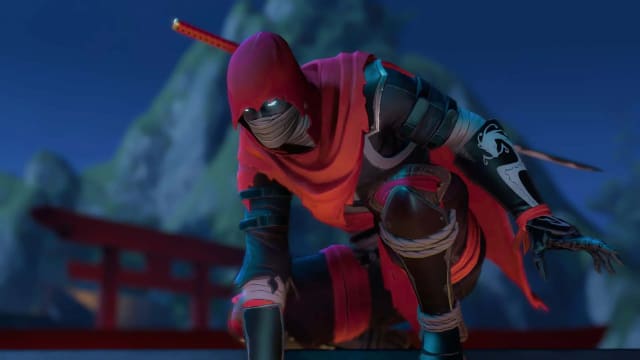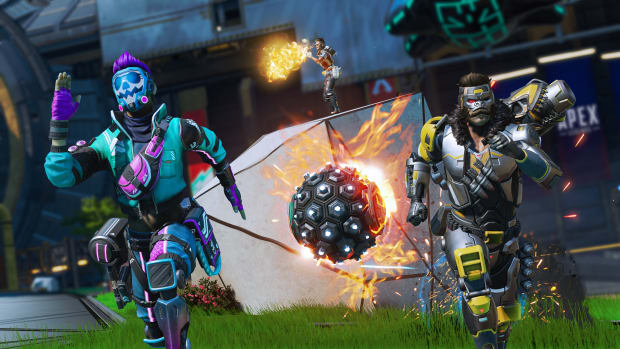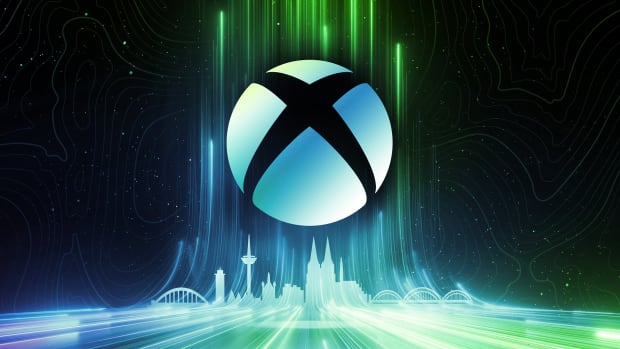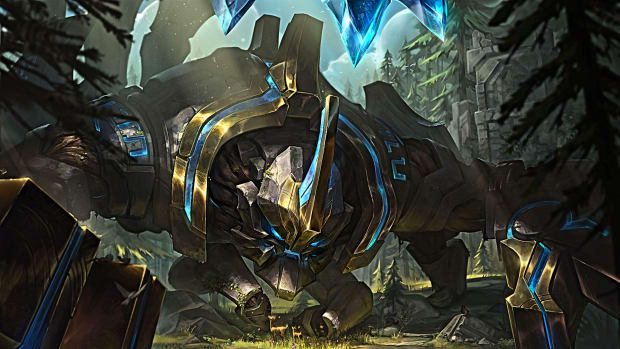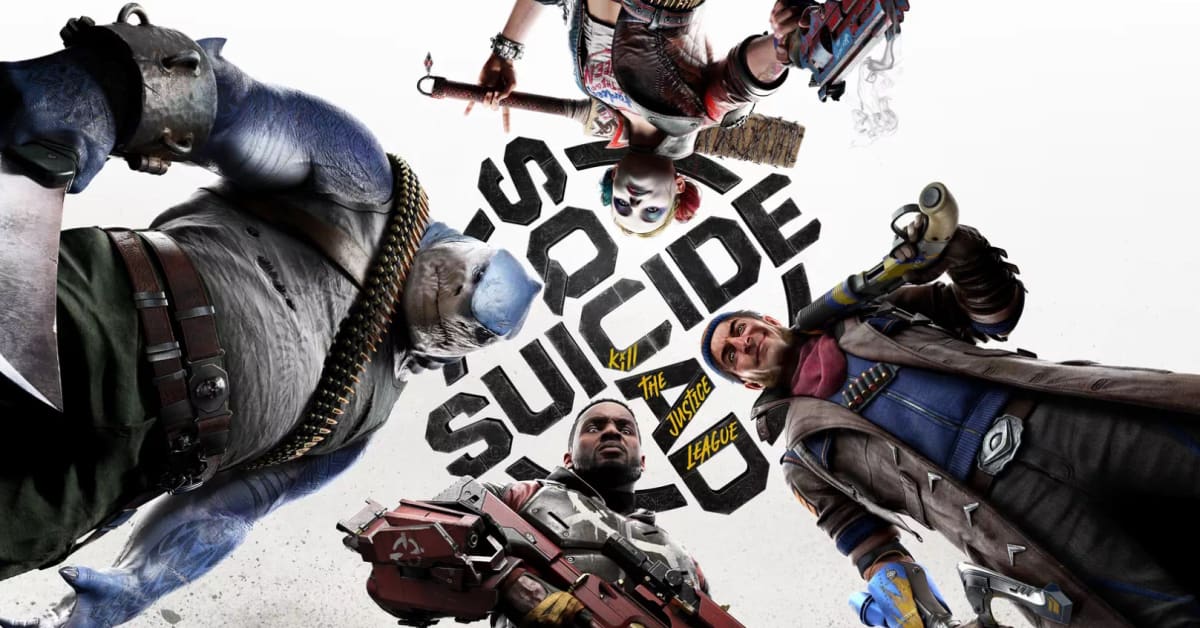
Suicide Squad: Kill the Justice League review – it’s not very super, man
Superman is too powerful for video games. He can circumnavigate a planet in seconds, catch and toss a nuclear warhead, and take a tank shell to the face without his hair balm losing its hold on his pristine barnet. When the smoke clears, that little curl at the front will still be there. That’s why we’ve never had a good Superman game. He’s just too hard.
So if Superman ended up being a villain, it’d be bad times, right? This is a dude that can turn people into jam by running through them – what hope could normal people, never mind other superheroes, have?
Suicide Squad: Kill the Justice League solves this problem, as it does every other problem, with bullets. All it takes to murder Superman is a bit of Kryptonite and four misfits with guns.
In Rocksteady’s first game since 2015’s Batman: Arkham Knight, you play as either Harley Quinn, Deadshot, Boomerang, or King Shark as they’re forced, through bombs implanted in their skulls, to take out the entire Justice League, who have been mind controlled by an alien called Brainiac. Mechanically, the game has more in common with looting and shooting in The Division – not a genre I love – than it does Rocksteady’s previous work. Still, I hoped that I’d at least get something out of the story, which is canon to the Arkham universe and one of Kevin Conroy’s last performances as the Caped Crusader.
I didn’t.
The thing is, it’s not even the writers’ fault. The character writing is excellent – every little quip and interaction between your squad members is snappy in that familiar James Gunn style, and there are plenty of moments that made me chuckle. This brilliant dialogue writing is backed up by stellar performances from the actors and best-in-class animations, catching all the nuances of every emotion. But the story is undermined by having to work in a game where you shoot lots of things to earn better guns to shoot more things and do more damage to earn more… you get the point. In short: you can’t tell a good story with a slot machine.
So we’re back to Superman. The lead-up to the fight itself is excellent. I won’t spoil it, but you get a sense of his godlike powers and see what he’s capable of before you come face to face, and then you’re plonked into a tiny arena where he throws tornados at you while you shoot numbers out of him until he falls out of the sky. Rattatatatatatata, and he’s done. It feels like that sensation you get before you sneeze – without the payoff. And it’s the same for the rest of the Justice League, who all go down in a hail of bullets and damage numbers. It doesn’t even feel like an achievement because the Brainiaced heroes all hold back whenever you’re fighting them, even if, moments before, they were murdering cops and civilians with a click of their fingers and sidestepping bullets like Neo.

An early Batman section is a highlight in Suicide Squad: KTJL, but only because it's linear.
Warner Bros.
An early section with Batman shows a bit more promise. You’re like a grunt in the Arkham games, stalked by Batman at the peak of his powers and with the gloves off. He’s spraying explosives everywhere, popping out of vents, and swooping down from above, before picking you all off one by one. But this section is linear and it strips your movement abilities away because something like this just wouldn’t work in the actual game – no, once you’re out in the open world of Metropolis, you gotta shoot numbers out of things.
Metropolis is a big step up from Arkham on a technical level. It’s a dynamic world where the weather rolls in, day turns to night, and things that happen in the story impact the environment around you. But it’s completely wasted in a game like this. It feels more like a playpark than a city – a series of rooftops to bound along to reach your next objective, with barely any incentive to ever get to street level. Sure, each of the four characters has a different traversal method and they all feel distinct and fun, but these are all characters who aren’t known for traversal, so the story has to give them each a gadget to allow them to soar, flip, teleport, and jump around.
It quickly becomes clear that traversal is a band-aid to plaster over the fact you’re just going from icon to icon in a city built to hide dozens of Riddler Trophies and little else. And despite it being an open world, you’ll be killed if you leave the invisible boundary of the mission area, which seems like a misfire in a game where you fly around – especially as I’ve even had this happen while standing right next to an enemy. You’re free, but only to shoot numbers out of aliens in very specific conditions.

Metropolis looks great in Suicide Squad: KTJL, but there's nothing to do in it but shoot guns.
WB Games
All the resources and time spent on making an open world that looks incredible during the day, at night, during the rain, the shine, and even in the aftermath of a nuclear explosion – it feels like a shame just to leave it as a backdrop to shooting things while numbers pop out. You’re only ever going to do, like, five things in this world, and they all revolve around shooting things. You shoot things while protecting a bus that looks like it’s from Fortnite. You shoot things while protecting plants. You shoot things while protecting trucks. Sometimes you drive a hover car – again, no reason to be on the ground, even in a vehicle – and rain down fire to protect some other objective. Towards the endgame, you take out big turrets, but these are just a series of weak points you have to expose by shooting purple aliens first.
There’s more padding in this game than in Ben Affleck’s Batsuit. While the combat and traversal feels snappy, punchy, and responsive – honestly, it’s much better than I expected – it’s let down by rote mission design and busywork. This is highlighted best by the endgame, which is a series of checkbox tasks. It forces you to fight the final boss multiple times but also introduces a new currency that you have to earn – yes, by doing repetitive side missions – before you’re able to trigger the main mission. It attempts to mix things up by giving you contracts, which are supposed to encourage you to engage with all the tools at your disposal, but even these suffer from a chronic lack of imagination. One – I am telling the truth – asks you to “reload ten times”. So I just fired a bullet and reloaded ten times. Kerching!
Some missions have special parameters too, such as enemies that can only be hurt with grenades, which in turn forces you to engage with some of the nuances of combat (you have to damage enemies in certain ways to make them spit out specific resources such as ammo, shield, or grenades), but it’s just more of the same but with handcuffs on. And if you’re playing solo with AI, they won’t understand these parameters so they won’t, for example, just use grenades. You’re on your own, I’m afraid. Luckily, most of the enemies in this game just stand in one spot and shoot plasma at you so you’ll be fine.
Of course, the game was designed with co-op in mind from the start. Still, I’d argue little thought has gone into how attacks can synergize, and there’s so much happening on-screen – numbers, status indicators, explosions, everyone flying in different directions – that it’d be almost impossible to purposely pull off a multi-player combo anyway. This is highlighted best with the vehicles, which come with a driver’s seat and a turret for two people to pilot. You’re honestly better off just taking a vehicle each since the car’s main cannon is many times more powerful than the turret your allies can use. You’re encouraged to do your own thing at every turn.
It’s a shame because there are flashes of good ideas, like how the person who chooses the next mission in co-op is dictated by whoever did the most damage in the last mission. It gets across the fact that the Suicide Squad is a shaky alliance and encourages a bit of friendly competition, but it’s just a flash of a good idea in an otherwise disappointing game.
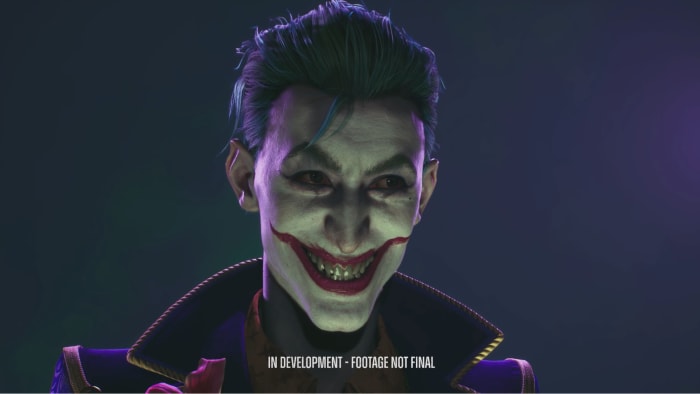
An alternate dimension version of The Joker is coming to Suicide Squad: KTJL in a free post-launch update.
Rocksteady
I really wanted to like Suicide Squad: Kill the Justice League – you can tell a lot of people worked very hard on it. I love the Arkham games and there isn’t another studio I’d have trusted to tackle a concept like this, but everything good about this game is undermined by its games-as-a-service shackles. There isn’t a single thing in here that wouldn’t be improved by the kind of actual level design and quest design you can get in a story-focused single-player game (or even a co-op game, at that).
You can sense the seams, where the game was refocused and retooled in development, the side content stuffed in to bloat out the runtime and keep people pushing for higher numbers and bigger guns. In the end, I don’t think it’ll please either camp. Those who are looking for a great story from some of the best storytellers in the business will be left disappointed by how hamstrung it is by its live service trappings, and those who want to shoot numbers out of things will wonder where the meaty endgame content like raids are. On the one hand, some of this stuff can be fixed with regular updates, but on the other, that’s another studio we’ve lost to “player engagement” metrics.
Score: 5/10
Version tested: PS5.
Tech breakdown
Suicide Squad runs at a capped 60fps on console. Character controllers are snappy and reactive, which is perfect in a game where you spend a lot of your time stringing movement abilities together. There are plenty of bugs, however, from hard crashes to constant tutorial tooltips dozens of hours after you've already been taught the controls. After every mission, I was told how to double jump, even into the endgame. I also encountered a progression blocker on a main mission, which I solved by killing myself to restart the section.

